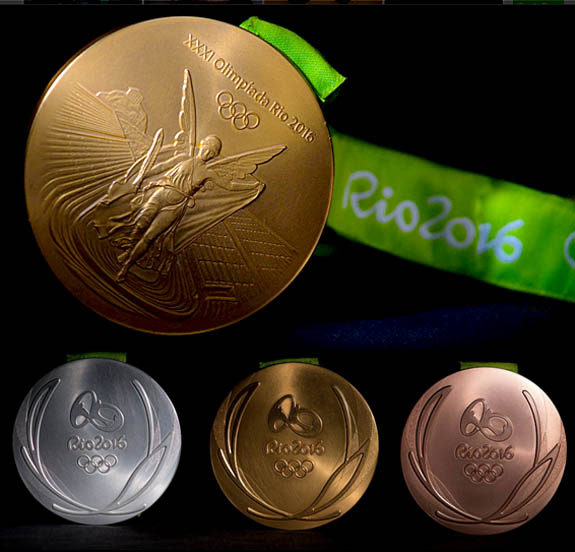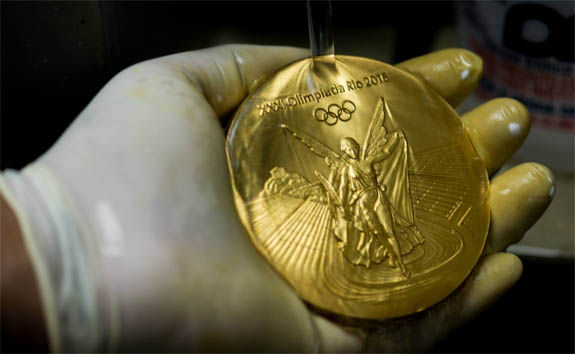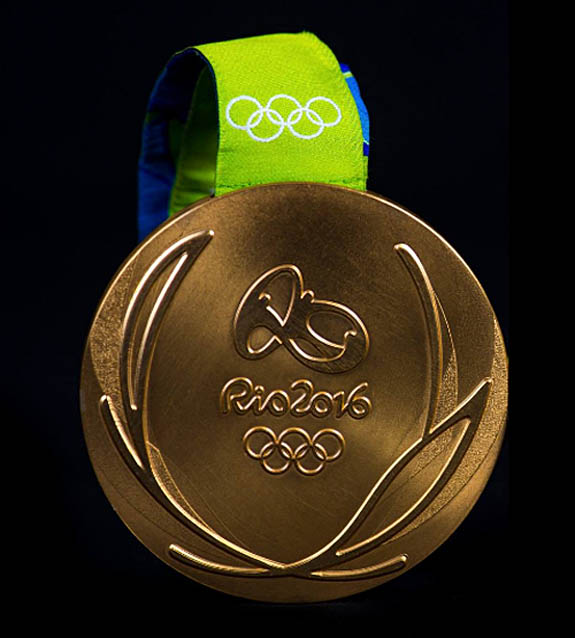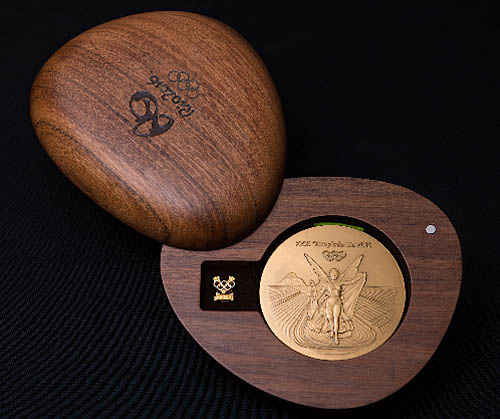With the Olympic Games kicking off in Rio de Janeiro in 22 days, we ask you to ponder what seems to be a very silly and simple question: Are the Rio Olympic gold medals really made of gold?
Well, the answer is "yes" and "no."
Have you ever wondered how the International Olympic Committee (IOC) could afford to give away pure gold medals? With the Rio medals weighing 500 grams, each would cost $23,668 in precious metal alone. The IOC will be awarding 812 gold medals during the Olympic games, so 24-karat gold medals at 500 grams would generate a tab of more than $19.2 million.
Yes, there was a time when Olympic gold medals were made of solid gold, but the last ones were awarded in Stockholm, Sweden, way back in 1912.
Starting in 1916, the IOC mandated that gold medals be made mostly of silver, with a 24-karat gilding of exactly 6 grams (.211 ounces). The IOC also required the medals to be at least 60mm in diameter and 3mm thick.
Interestingly, since the density of gold is nearly twice that of silver, if the committee attempted to mint a 60mm wide, 3mm thick coin in pure gold, it would weigh about 1,000 grams (2.2 pounds) and be worth about $47,000 in precious metal.
Since the Rio medals are composed of 494 grams of 96% pure silver and 6 grams of 99.9% pure gold, the total precious metal value is about $284 in gold and $339 in silver — for a grand total of $623. The IOC will spend $505,000 on gold medals this year.
Rio's silver medals are made of 500 grams of 96% pure silver and have no gilding at all. The precious metal value is about $344.
Bronze medals contain mostly copper with a bit of zinc and tin. The composition is similar to that of a penny. The medal contains no precious metal and has a value of less than $5.
The medal's design features laurel leaves – a symbol of victory in ancient Greece – surrounding the Rio 2016 Olympic logo. According to Olympic Games tradition, the other side of the medal regularly features an image of Nike, the Greek goddess of victory, with the Panathinaiko Stadium and the Acropolis in the background.
For the first time, the medals are slightly thicker at their central point compared with their edges. The name of the event for which the medal was won is engraved by laser along the outside edge.
The medals of Rio have been made with sustainability at their heart. Athletes who get to stand on the highest podium after their respective competitions will receive medals made from gold that has been produced according to strict sustainability criteria, from the initial mining all the way through to the design of the end product.
The silver and bronze medals have been fabricated using 30% recycled materials. Half of the plastic in the ribbons — used to hang the medals around athletes’ necks — comes from recycled plastic bottles. The rounded cases that hold the medals are made from freijó wood certified by the Forest Stewardship Council (FSC).
Rio 2016 published this short video showing how medals from both the Olympic Games (Aug. 5-21) and Paralympic Games (Sept. 7-18) are made...
Credits: Rio medal images courtesy Rio 2016/Alex Ferro.


















